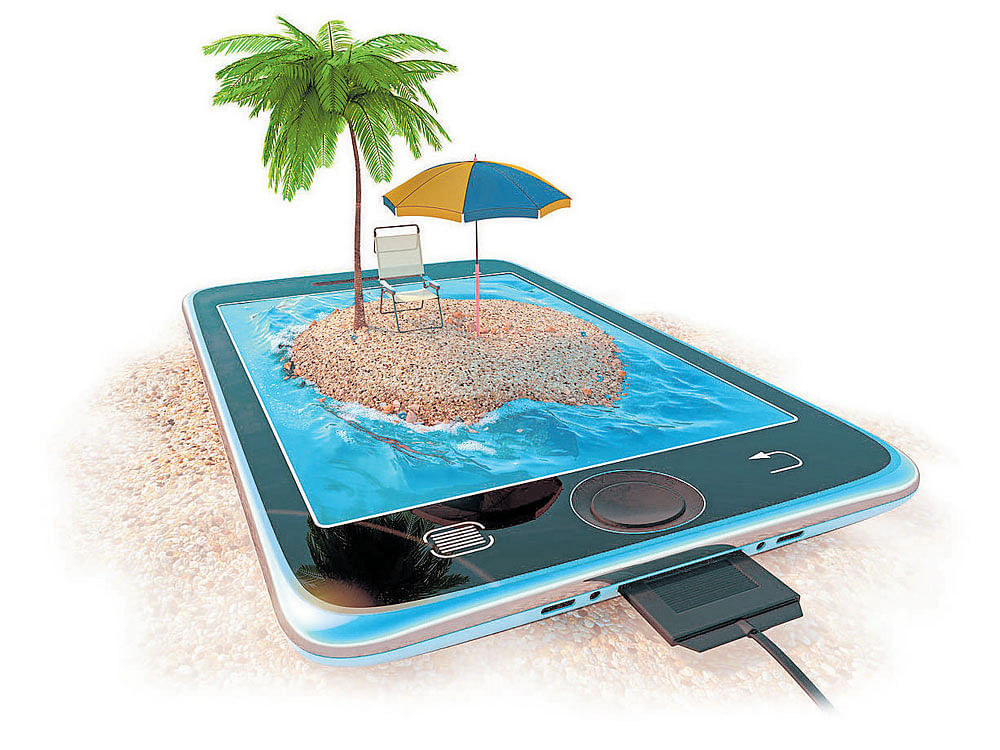
Personalisation has emerged to be one of the most path breaking consumer trends across most industries, globally.
Now it is happening with tourism in India, where the stage of digitisation in the sector have moved beyond economies of growth and outcome and has reached the economy of experience. Experience for today’s consumer is synonymous with personalization.
The old days of one size fits all, x-nights and x+1 day, limited destination vanilla holiday packages are long gone. The permutations and combinations that cover the demand of today’s consumer are limited only by the consumer’s imagination and whatever is going on in their peer group.
Everywhere, the consumer wants to be treated like the king and their every wish to be treated as a command. Indian tourism is not an exception.
For the Indian tourism industry to realise the full potential of this personalisation phenomenon they need to understand their potential consumer well.
Understanding them will depend on how much the industry players know about them — their wants, their limitations, their affiliations, their peer group, their lifecycle stage, the extent of how digital savvy they are, their geographical location, their family and of course their purchasing power. Today’s digitally savvy consumer wants something that is custom made for them. Consumer knowledge will drive the personalization imperative for the tourism industry.
Some of the consumer information needed for understanding their persona is readily available with the companies through the registration forms and loyalty programmes, however its not enough to just know what they have done and what their peers have done. The competitive advantage will rest in an ability to predict what they may be doing next, what they may be planning next and what can be the next opportunity to pitch an irresistible offer to them.
Predictive Analytics (PA) and Natural Language processing (NLP) together can change each of the key variables in the tourism business — Customer Experience, Business Efficiency and Cost of Infrastructure.
NLP combined with PA has the power to predict the customer’s purchase journey and deliver personalised consumer experiences at each stage of the journey in real time.
It can accurately create that perfect personalization which answers all the existential questions that have a direct bearing on the bottom line — How do I personalise the creative? How do I personalise the offer? What can I show that’s going to drive purchase? It can elevate customer experience through proper scheduling (avoiding service gaps because of missing personnel), influencing purchases through the determination of social value and marketing to the influencers, finding out the churn in customers, ascertaining their sentiments and picking up emerging trends.
Top companies like Apple and Google are already at an advanced stage of evolution in NLP. Apple’s Siri can answer normal questions like “Siri, where’s the nearest coffee shop?” and, “Search coffee shops ZIP Code xxxxx.” Google has an ability to reply reliably to most of the questions asked. Google translate or Facebook translate can also throw decent replies. If NLP evolves enough to interact and react flawlessly to humans, it will have far reaching consequences for customer service and experience in tourism.
It drives business efficiency by automation of low value added activities, increasing the response rates of direct marketing, lowering marketing campaign costs and increasing return on investments, improving cross selling opportunities, improving budgeting, planning, forecasting and most importantly reducing the cost of acquiring new customers and services.
It can lower the cost of infrastructure dramatically because a lot of effort goes in converting a potential consumer into a real one, or in fact a loyal one in tourism. This involves a lot of routine tasks that don’t add too much of value for the consumer but add to the cost of conversion — like engaging the customer the moment she starts her search, replying to her queries when she calls or when she visits the website. If all these routine costs can be automated, they will save a lot of hard cash for the companies and add directly to their bottom line.
Tourists today come in various shades — incentive tourists (got the trip as a reward), business tourists (travelling on business), educational tourists (travelling to a destination to study or to learn more about the place/ surrounding regions), culture tourists (travelling to understand the culture of a place or to attend a particular festival or concert), adventure tourists (travelling for adventure activities like rock climbing, sky diving, whale watching, cave diving etc.), eco-tourism enthusiasts (travelling to see nature in its pristine unadulterated form), religion tourists (travelling to a holy place like the Vatican, Mecca, Varanasi), special interest tourists (bird watchers and anglers etc.) — and all these tourists have different expectations. An incentive tourist might have a lot of free cash to burn as they have everything else paid for while a cultural tourist might be travelling on a shoestring budget.
Indian tourism is almost at its point of inflection when it comes to customer experience and personalisation. They have become decisive variables with the massive digital transformation of travel and hospitality in India. Whoever offers the best, personalised, “value for money” experience will have a strategic advantage and the largest share of wallet in the Indian tourism business.
With the advent of a very connected world, a good event or a positive feedback can help improve the business but a single bad event can also get highlighted out of proportion. The businesses, hence, have to reduce the risk by implementing proper infrastructure as well as IT security, to avoid any misuse.
(The author is Vice President: Retail, Travel and Entertainment Industry at Happiest Minds Technologies)